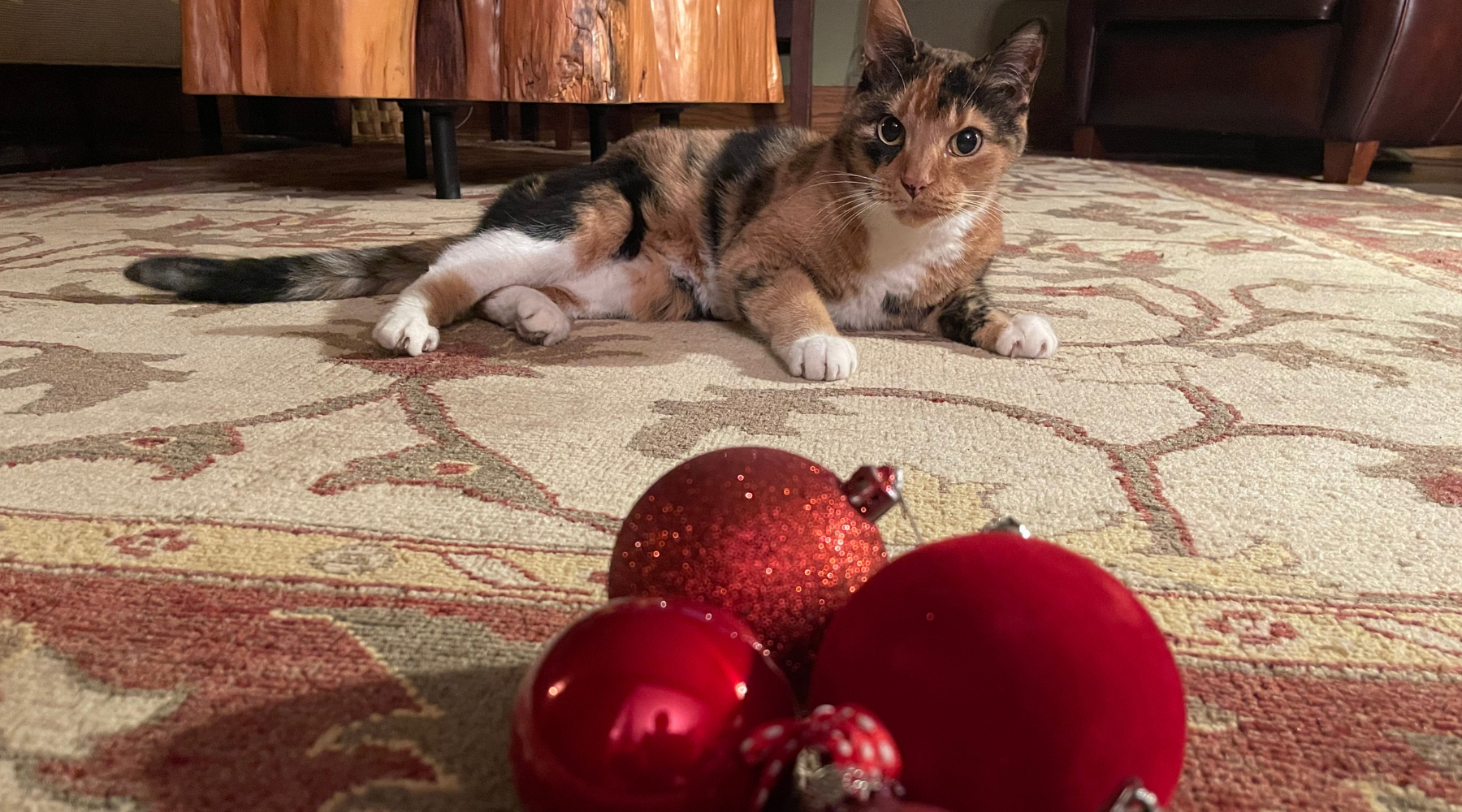Each week, OMRF Vice President of Research Dr. Rod McEver opens “Adam’s Journal” to answer a medical question from Adam Cohen, OMRF’s senior vice president & general counsel.
Adam’s Journal
‘Tis the season – for my fiancée’s cat, February, to eat the “pine needles” off of her artificial Christmas tree. This usually leads to results that, while not cat-a-strophic (sorry), don’t exactly create an air of holiday cheer. Yes, I’m talking cat vomit.
Obviously, Mary has put the tree away. I know you’re not a veterinarian, but any idea what’s up here? And how we might safely bring back the fake greenery?
Dr. McEver Prescribes
This is way out of my league, so I called Dr. Jennie Criley, OMRF’s attending veterinarian and director of comparative medicine. Here’s what she said:

“Why do cats do anything they do? They’re innately curious animals, and something new in their environment will pique their interest.
That said, the behavior does resemble another one that is common among cats: eating – real – grass.
Many believe they do this to induce vomiting, but I’ve never seen science to back this up. Others theorize it’s a remnant from ancestors that ate grass to help expel parasites in the digestive tract. Thanks to medical and hygienic advances, most adult household cats no longer have parasites in their digestive tracts, but the behavior persists.
It might even have to do with the needles’ shape, which can play a big role in cats’ eating habits. Fun fact: Cat food is often triangular because cats like to eat the tips off of triangles.
Regardless of February’s motivation, it’s important to stop the behavior. As you’ve seen, ingesting the needles can cause vomiting and, in extreme cases, blockages or perforations that could require immediate veterinary treatment.
The silver lining here is that you’ve avoided the more common Yuletide cat-owner complaint: Cats climbing trees, knocking off ornaments and even tipping trees over. Giant cat playground!
In extreme cases, pet owners have hung trees upside down from the ceiling. For obvious reasons, I wouldn’t recommend this. (Although it would be pretty awesome if you could pull it off.)
For February’s sake, the fake tree should remain in long-term storage. Or it may be time to send it to fake tree heaven.”
–
Do you have a health query for Dr. McEver? Email contact@omrf.org and your question may be answered in a future column!



